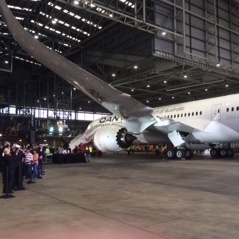thepinkmachine wrote:40 T payload is indeed on the high side for ULR flights. If anyone’s interested, here’s trip fuel burn data for 789@ 25T payload, which is more or less what QF9/10 carries. Incidentally, 25T is also where the 789 becomes fuel volume limited. At higher ranges/lower payloads it will run out of fuel volume before it hits the MTOW. Assumptions for the numbers below are same as before.
4000NM - 41.5T
5200NM - 55.0T
6000NM - 64.6T
7200NM - 79.8T
8000NM - 90.5T
8400NM - 96.0T
The 280T A350 maxes out on fuel at about 32~35T payload and carries some 9T fuel more than the 789. This is offset by somewhat higher fuel consumption. I guess the A350 still has a slight edge, but at extreme distances and low payloads they come close to each other. How close would depend on how much more the 350 burns. Zeke?
Thanks for the data. My concern all along was the assumed 40t payload when comparing the 789 vs the A359. To me, a much more realistic payload comparison would be in the 30-35t range. This would generally include full pax and bags and a few tons of cargo.
On ULH sectors i would think cargo is much less a priority as cargo doesn't mind routing through a hub or layovers. I would be very interested to see a comparison of both frames at 30-35t of payload to see if that produces a meaningful difference.
Thanks again for the info.
Edit: On a provided payload range chart it looks like your 41.5t of fuel burn at 4000nm is exactly correct for the 789 with a 25t payload. The A359 under the exact same conditions appears to burn about 5t more fuel. This makes sense to me as the A359 is a heavier aircraft with a larger wetted area.














